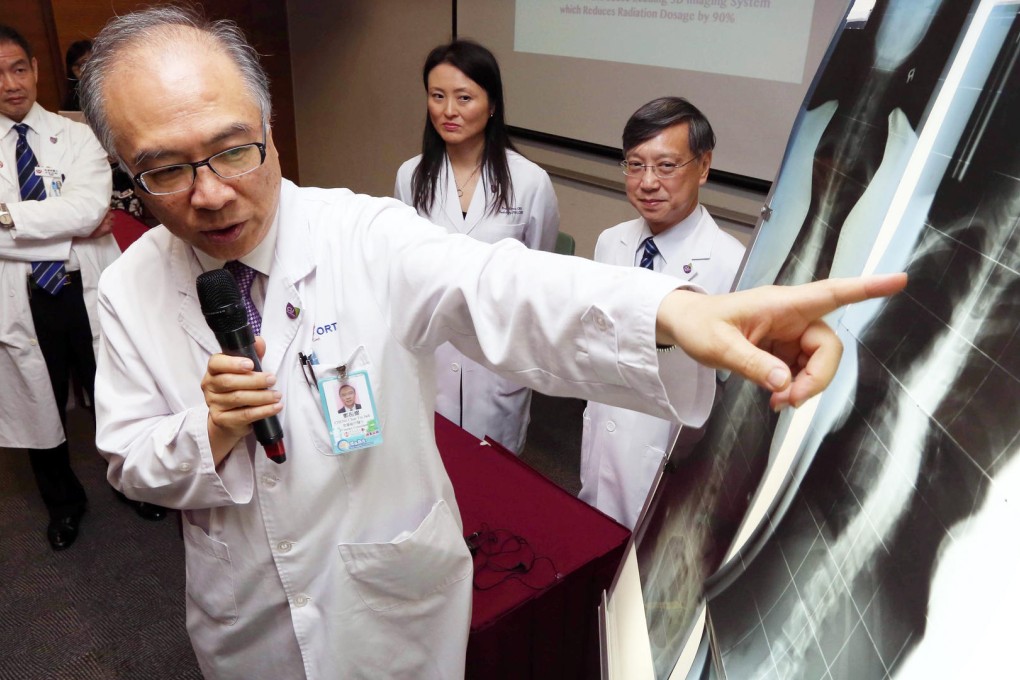Hong Kong's Chinese University introduces new X-ray machine with less radiation exposure
University's HK$6m system will help children with spinal deformities

Chinese University has introduced a 3D X-ray machine which can cut radiation exposure for patients by more than half and will be of particular help to children with excessively curved spines.
The HK$6 million EOS Imaging System, developed in France, emits 60 per cent less radiation than digital radiography, the current technology used to take X-ray images. The reduction is even more marked - by 90 per cent - when compared with conventional X-rays.
While computerised tomography (CT) scans can produce 3D images of bones, the new technology can achieve the same result, but with the radiation just up to 0.2 per cent of that of a CT scan.
With a seven-second scan and a total examination time of four minutes, the machine can produce two whole body images, taken at the front and at the side, simultaneously in a true size without the need for putting together and enlarging images, thereby improving accuracy. The number of cases handled daily can be doubled to 40.
Everything can be done at once without stitching. Without enlargement, the images become more accurate
"Everything can be done at once without stitching. Without enlargement, the images become more accurate," said Professor Winnie Chu Chiu-wing from the university's Department of Imaging and Interventional Radiology.